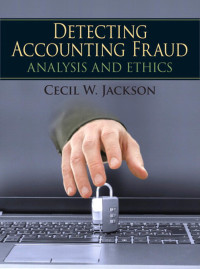Question
Inventory and JIT - questions below After spending the last two decades building amenity-filled campuses that maximize the collisionability of talent and ideas while enticing
Inventory and JIT - questions below
"After spending the last two decades building amenity-filled campuses that maximize the "collisionability" of talent and ideas while enticing their workers to stay in the office for as much time as they can, Covid-19 has shown these leading-edge technology companies that their workers can be just as productive or in some cases, even more so when they stay at home.[1]"Harvard Business Review
The Arbutus Eco-Furn Company (AEF) makes ergonomic office furniture out of bamboo lumber. Due to the recent COVID pandemic, the company has seen a rise in demand for their furniture for the home office user. Alicia Tam, owner and CEO of the company expects the current level of demand will hold steady for the next five years as she learns more corporations are moving to the remote work model where employees work from home.
AEF manufactures their eco-friendly furniture at its plant in Aldergrove, BC. To prepare for both the short term and the future, Alicia wants to review current plant operations and explore ways in which the company can become more efficient. She has hired you, as consultant, to assess the company's manufacturing and inventory practices and provide recommendations.
Current situation:
To assist with your analysis, Alicia asked her cost accountant to summarize some of the key financial figures relating to inventory:
Bamboo is the major direct material used in the production of the furniture. It makes up 80% of the inventory value. Annual requirements for bamboo are 122,544 kilograms. It is purchased by the kilogram at an average cost of $1.20 per kg.
Bamboo is ordered on a monthly basis from Exquisite Hardwoods, a local importer of specialty hardwoods. AEF works with a purchasing agent who contracts with AEF to order in the bamboo. The agent, who works away from AEF's office, writes up the order on a paper document, faxes it to the supplier and follows up via phone to ensure the order is filled. She charges $450 per order. This is the only order cost incurred.
Annual costs of warehouse leasing, insurance, utilities, and management are $8.80 per kilogram of bamboo.
Proposed JIT:
Alicia is also considering the installation of a just-in-time (JIT) manufacturing system to reduce AEF's costs and be responsive to demand. She has already consulted with an industrial engineer to learn more about how to rearrange the shop floor to create a lean manufacturing environment. Costs and resulting benefits of implementing JIT (excluding inventory carrying and ordering costs) are as follows:
One-time cost to rearrange the shop floor to create manufacturing workstations is $475,000
Retrain existing workforce for the JIT required skills is $60,000
Anticipated defect reduction is 40%. Currently there is a cost of quality defect assessment listed as $150,000 per year. This is considered to be an internal failure cost.
AEF manufactures its products using a batch process. The setup time for each of the batches will be reduced by 40% under a JIT system. Current annual setup costs are $350,000.
A 16% premium on production supplies will be charged as supplies will be delivered on a more frequent schedule. Currently production supplies are $520,000 per year.
For both the existing and proposed systems AEF's opportunity cost is 15%.
Required:
a.CURRENT SITUATION: To begin this analysis, you decide to assess the current situation as it relates to AEF's ordering practices and carrying costs. Your initial thought is the company may be able to optimize its order and carrying costs using existing practices.
i.Given current ordering practices, what is the total annual relevant cost of ordering and carrying inventory.
ii.Using Economic Order Quantity, what is the optimal order size (in kilograms) AEF should use to minimize total annual order and carrying costs.
iii.Calculate the savings incurred in ordering using the order quantity calculated in part (ii)
b.PROPOSED JIT. Alicia informs you the industrial engineer hired to assess AEF's manufacturing system, suggests total inventory carrying costs can be reduced by 50% if inventory is ordered in quantities of 1,332 kilograms.
i.Explain to Alicia the effect this will have on total inventory costs (carrying and ordering) and provide a potential solution to reduce total inventory costs. (Calculations are not required).
ii.Determine whether it is in the best interest of Arbutus Eco-Furn to install a JIT manufacturing system.
Focus on:
-Relevant manufacturing costs/savings (exclude inventory) and the ability to show a return on the cost. (Remember to identify annual and onetime costs/savings)
-The advantage and disadvantage of JIT for AEF (minimum 1 each)
Show all calculations and provide a response to Alicia which includes pertinent figures from your calculations.
Step by Step Solution
There are 3 Steps involved in it
Step: 1

Get Instant Access to Expert-Tailored Solutions
See step-by-step solutions with expert insights and AI powered tools for academic success
Step: 2

Step: 3

Ace Your Homework with AI
Get the answers you need in no time with our AI-driven, step-by-step assistance
Get Started


